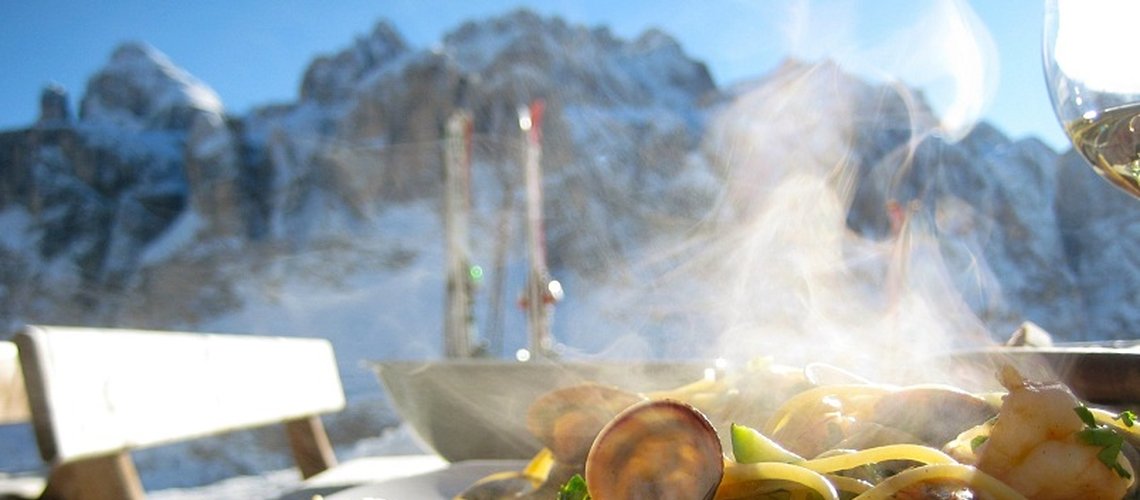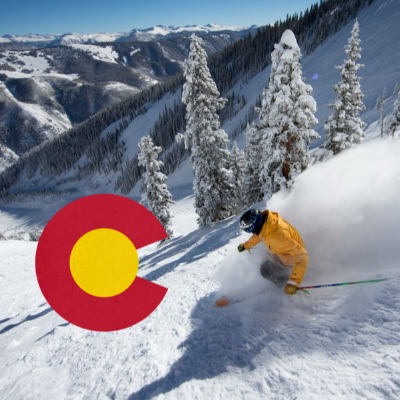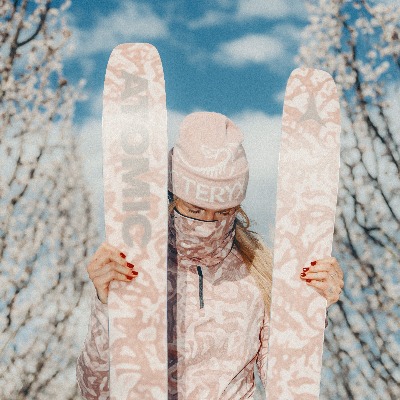Analysis By Mountain Management Consulting & Lumifai Shows Where Alpine Winter Tourism Is Heading In Terms Of Communication.

Alpine destinations are increasingly focusing on emotions, events and lifestyle in their current winter communication – an analysis by Mountain Management Consulting and Lumifai shows where alpine winter tourism is heading in terms of communication.
This year, 75 ski destinations in Switzerland, Austria, Italy, Germany, and France – including big names and hidden champions – were once again subjected to a communications analysis by Mountain Management Consulting and Lumifai. Thousands of social media posts from channels such as Facebook and Instagram, websites, and advertisements were examined. The partners, Lumifai (a specialist in AI-supported data analysis) and Mountain Management Consulting (experienced strategy consultants for ski destinations), wanted to find out "where winter tourism in the Alpine region has developed in terms of communication." The results paint a clear picture: The digital communication of ski destinations is changing – away from purely nature and sports images, towards a stronger focus on needs, emotionalization, and new themes. Below, we highlight the most important trends and differences at the country level so that marketing and PR managers can future-proof their own presence.
More experience, less postcard: New content focuses
A key finding of the analysis: Alpine destinations are expanding their thematic scope. While classic brand motifs such as nature and sports continue to dominate online content – in the 2023/24 winter season, nature played a role in around 78% of online touchpoints (e.g., social media posts), and sports/action in around 72% – these traditional "postcard motifs" have slightly declined in share compared to the previous year. Instead, experiences and lifestyle topics are noticeably gaining importance. In particular, content on events and parties increased significantly (around +3 to +7 percentage points [pp] depending on the country). Many destinations featured an increased après-ski atmosphere, festivals, family events, and nightlife scenes last season. Culinary arts – i.e., posts about food, restaurants, and regional specialties – also moved more into the spotlight, especially in France and Switzerland (each with around +5 pp more share than the previous year). Communication is thus broadened: in addition to the panoramic slopes and powder snow, the focus is now increasingly on enjoyment, conviviality and events as a hook.
At the same time, a shift towards guests' emotional needs can be observed. Posts more frequently address the emotional world and motives of vacationers: a thirst for adventure, relaxation, freedom. The desire for adventure, for example, remained one of the most frequently addressed communication aspects (present in over half of all posts) and even increased slightly on average. Content conveying a sense of slowing down and tranquility remained constant overall – with notable increases in individual markets (e.g., in Switzerland, +2 pp more relaxation topics). In contrast, purely informative or sober content continued to fade into the background. Practicality (practical information, factual information), for example, lost significantly in the appeal (in Austria, -6 pp fewer mentions). The destinations therefore communicate less in the style of a travel guide and more in terms of experiences and emotions.
Changing values: status instead of authenticity?
It's also interesting to look at the brand needs and tones conveyed. The analysis shows that subtle shifts are emerging here. Many destinations are increasingly emphasizing exclusivity and status in their imagery and word choice – particularly pronounced in Austria, where the need for "status" was emphasized 4.5 percentage points more frequently than in the previous year. This suggests that some Alpine resorts are more clearly emphasizing their premium image to differentiate themselves from the competition. At the same time, a slight shift away from the authenticity narrative can be observed: terms and representations surrounding "authentic/genuine" have declined overall (in Italy, for example, this attribute decreased by 9 pp). Apparently, brand managers are now trying to focus more on modernity and uniqueness rather than traditional, rustic authenticity. This thesis is supported by another trend: content intended to appear "cool & trendy" increased significantly (+10 pp in Austrian resorts, +4 pp in Italy). The emotionalization of communication is also reflected in the fact that instead of emphasizing one's own down-to-earthness, the attitude to life is now increasingly conveyed - be it the feeling of adventure or community.
Interestingly, community-oriented values remain important, but are emphasized somewhat differently. For example, the need for "closeness" (a sense of security, proximity to people or place) was addressed somewhat more frequently in Italy (+2.7 pp), while "identification" with the destination (feeling part of the place) was addressed noticeably less frequently everywhere (a decrease of 1–9 pp depending on the country). Likewise, the focus on "individuality" decreased across the board (-2 to -4 pp): Thus, the target group is addressed less through the unique selling point of the individual and more through shared experiences and collective moods. Overall, a shift in the value proposition can be observed here: Storytelling is shifting from authentic and individual to trendy and exclusive – apparently with the intention of appealing to new target groups and scoring points with a contemporary image.
Trend towards lifestyle and innovation instead of just natural idyll
The results also reveal a stronger lifestyle orientation in Alpine brand communication. Many destinations clearly want to be perceived as innovative, diverse, and unique. The attribute "innovative" recorded significant increases in posts (e.g., +4 pp in Italy, +3 pp in France) – an indication that modern infrastructure, new offerings, and digital experiences are increasingly being showcased. Likewise, content described as "unique" was highlighted with incomparable frequency (especially in Switzerland +5.6 pp and Austria +4.4 pp). The message: This destination offers something special that cannot be found anywhere else. Diversity and variety also remained an important aspect and increased slightly. In contrast, the term "authenticity," which has been used for years, has lost some of its traction, as already mentioned.
Another aspect of the lifestyle trend is the presentation as "cool & hip." Austrian ski resorts in particular have noticeably rejuvenated their image – posts with a cool/trendy attitude increased by over 10 percentage points. This is reflected in stylish event videos, youthful imagery, or the emphasis on trending topics such as freestyle parks and music events. Overall, the industry seems to have understood that it needs to score points in the competition for attention (especially among younger target groups) with lifestyle topics and contemporary imagery. Sheer natural beauty alone is no longer enough as a communication hook – it is complemented by trendy restaurants, fashion, nightlife, and social media-friendly presentations.
And what about the topic of sustainability? Surprisingly, environmental awareness continues to play a marginal role in winter communications. Posts emphasizing ecological aspects accounted for only 1–2% of communications in both years – there has been little change here. Despite climate discussions, sustainability (at least in external social media communications) still receives little resonance in winter tourism. This field could offer potential in the future, but has so far remained a niche in the communications mix.
Country differences: Every market has its own tone
Although the general trends are evident across countries, there are striking national differences in the focus:
- Switzerland: Swiss destinations placed a particularly strong emphasis on events and parties – nowhere else was the increase as high (+7.5 pp). At the same time, Switzerland somewhat reduced its focus on adrenaline and sports (-9.8 pp for action/sports motifs). Instead, there was an increased emphasis on recreation and well-being: Content featuring relaxation/wellness increased significantly (+5.7 pp). Swiss resorts are thus increasingly communicating a high-quality culinary and event experience against an Alpine backdrop, rather than the classic sports holiday.
- Austria: Austria's ski PR is undergoing a transformation. Brand communication has become noticeably cooler and more trend-conscious (+10 pp. cool/trendy). At the same time, traditional family and community themes remained important – the family aspect increased slightly (+2.8 pp.). Nature and sports remain core to the message, but have been slightly scaled back. Interestingly, Austria is emphasizing status and exclusivity significantly more frequently than before (+4.5 pp.), indicating a stronger appeal to affluent target groups. The mix of hip staging and a premium touch is apparently intended to appeal to a broad spectrum of customers, from young to luxury customers.
- Italy: Italian ski resorts have undergone a profile shift toward action. Nowhere else has the share of action & sports content increased so dramatically (+16.9 pp more than in the previous year). Accordingly, attributes such as sporty/active (+14 pp) and action-packed/lively (+16 pp) have skyrocketed – positioning Italy as a communicative El Dorado for adrenaline junkies. In contrast, quieter or more traditional tones have lost importance: slowing down (-6.8 pp), authenticity (-~5-10 pp), and local customs have faded into the background. Instead, the emphasis is on quality and accessibility: Posts more frequently highlighted high quality (+8.5 pp), and even easy accessibility was communicated somewhat more strongly. Italy is thus targeting its visitors in a very dynamic and service-oriented manner to attract modern, active guests.
- France: French destinations present a balanced picture with subtle shifts in emphasis. Families are once again more in focus (+4.1 pp. for family motifs), as are culinary delights (+4.9 pp. for culinary delights). The French like to present their ski resorts as enjoyable all-round destinations for the whole family. Adrenaline themes were somewhat reduced (-6 pp. for action-packed), while wellness and body awareness increased slightly (+2.2 pp.). Also noticeable is an openness to new things: Innovation and modernity gained space in French posts (+3 pp.), communicating high-tech lifts or new attractions. Overall, French communication remains close to enjoyment and family, but with a modern twist and slight touches of luxury (status +1 pp., exclusivity was subtly emphasized).
Conclusion: Where is alpine winter communication heading?
Communication in alpine winter tourism is undergoing a transformation. Overall, it is becoming increasingly important to focus on emotions and needs: Destinations are increasingly targeting their guests with experiences, feelings, and lifestyles. Whether they are adventure seekers, pleasure seekers, or status-oriented luxury travelers – every target group should get their money's worth and feel addressed. Classic landscape and ski images alone are no longer enough to capture attention – and, more importantly, natural landscapes and a "one-size-fits-all" communication approach are also insufficient to sustainably bind travelers to their destination brand. Destinations that combine impressive nature with thematically sharp storytelling to highlight their unique selling points appeal equally to the hearts and minds of their guests.
In terms of communication, the trend is toward greater diversity and contemporary positioning: Events, culinary delights, wellness, and innovation complement the tried-and-tested winter sports narrative. The differences between countries demonstrate that there is no one-size-fits-all approach – each nation emphasizes what suits its brand and audience, whether it's the party atmosphere in Alpine clubs or family-friendly gourmet holidays. For PR and marketing managers in the destinations, this means staying on the pulse of the times, boldly embracing new themes, and playing the emotional keyboard. Because winter tourism of the future won't just sell ski holidays, but emotional experiences in the snow.














